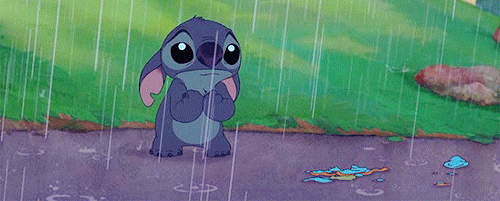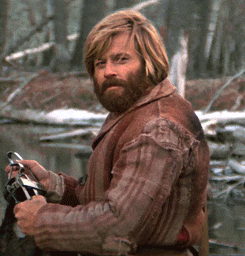Monday, August 26, 2019
Three Tips on the Hang Power Clean
This week we have a video addressing some tips that can help your hang power clean. Based on what we see during classes, we've picked out three areas everyone can work on.
Monday, August 12, 2019
Working Through Weakness: The Hardest Part
By Emil Chang
In high school, I had a bad case of patellar tendonitis mostly due to pretending to be good at basketball when, in actuality, I was graceless and mediocre at best. In 2015, I had a superficial surgery on my chest that limited my range of motion for almost four months. Finally in 2018, I subluxed my left shoulder bouldering. Needless to say, I had substantial bouts of time when my training was limited because of injury.
If you're in BHIP, odds are you like exercising and being active. So the hardest part about a debilitating injury is perhaps not the pain, but the mentality. It's the disappointment of not being able to lift as much as you used to, or being unable to participate in the same conditioning as everyone else. It’s frustrating. You feel physically and mentally stagnant. Your body feels bleh. It affects parts of life outside of training as well. No doubt- it’s easy to fall into a dark hole of lethargic inactivity, longing for the past when you were at 100%, pain-free, and strong.

That’s one way to think of it. However, as a coach and fellow injured person, I think injury and recovery should be part of your own path to success.

Quinn Henoch (in this video) and Josh Henkin (creator of Ulitmate Sandbag and spinal surgery survivor) have both talked about injury and recovery. Basically, recovery does not have to be a complete stoppage of activity. Sure, if you injure yourself deadlifting, it makes sense to stop deadlifting for a bit, but that's not the end of the story. The world of strength and conditioning is vast, and, if you wanted to keep moving, you probably could. Instead of recovery being passive, make it active. Use recovery as activity preparing your body to be as good as it can be to perform the next day.
Say you’re like me, and you had a problem in your left shoulder. Going overhead is not good and some pushing motion hurts. That sucks. But, you have another shoulder and two legs that work fine, as well as limited range of motion in your injured shoulder that is pain-free. So guess what? You can still exercise! All while not aggravating your bad shoulder!
Same thing goes for any injury. Your knees are bothering you? Sure, avoiding knee-dominant exercises like squats and lunges is a good idea. But, you can still improve leg strength by hip hinging and maybe even deadlifting. This can also be an opportunity to work on your upper body strength. Struggling to get your first pull-up? Maybe this is chance to refocus your training towards that.
Everyone's bodies are different. Your version of recovery will look different from everyone else's depending on your anatomy, overall strength level, and activity. My version of recovery is going to look different from a professional athlete's version, which is going to look different from a non-active adult's version, and so on.
Working through weakness is hard. It's probably harder than working out normally. But if you believe that you can still get stronger, faster, better, and keep working at it, then you've gotten past the hardest part.
**If you ever need tips on how to restructure your training or modifications, feel free to ask your BHIP coach. Any other questions or relatable anecdotes? Comment below!

In high school, I had a bad case of patellar tendonitis mostly due to pretending to be good at basketball when, in actuality, I was graceless and mediocre at best. In 2015, I had a superficial surgery on my chest that limited my range of motion for almost four months. Finally in 2018, I subluxed my left shoulder bouldering. Needless to say, I had substantial bouts of time when my training was limited because of injury.
If you're in BHIP, odds are you like exercising and being active. So the hardest part about a debilitating injury is perhaps not the pain, but the mentality. It's the disappointment of not being able to lift as much as you used to, or being unable to participate in the same conditioning as everyone else. It’s frustrating. You feel physically and mentally stagnant. Your body feels bleh. It affects parts of life outside of training as well. No doubt- it’s easy to fall into a dark hole of lethargic inactivity, longing for the past when you were at 100%, pain-free, and strong.
That’s one way to think of it. However, as a coach and fellow injured person, I think injury and recovery should be part of your own path to success.
Quinn Henoch (in this video) and Josh Henkin (creator of Ulitmate Sandbag and spinal surgery survivor) have both talked about injury and recovery. Basically, recovery does not have to be a complete stoppage of activity. Sure, if you injure yourself deadlifting, it makes sense to stop deadlifting for a bit, but that's not the end of the story. The world of strength and conditioning is vast, and, if you wanted to keep moving, you probably could. Instead of recovery being passive, make it active. Use recovery as activity preparing your body to be as good as it can be to perform the next day.
Say you’re like me, and you had a problem in your left shoulder. Going overhead is not good and some pushing motion hurts. That sucks. But, you have another shoulder and two legs that work fine, as well as limited range of motion in your injured shoulder that is pain-free. So guess what? You can still exercise! All while not aggravating your bad shoulder!
Same thing goes for any injury. Your knees are bothering you? Sure, avoiding knee-dominant exercises like squats and lunges is a good idea. But, you can still improve leg strength by hip hinging and maybe even deadlifting. This can also be an opportunity to work on your upper body strength. Struggling to get your first pull-up? Maybe this is chance to refocus your training towards that.
Everyone's bodies are different. Your version of recovery will look different from everyone else's depending on your anatomy, overall strength level, and activity. My version of recovery is going to look different from a professional athlete's version, which is going to look different from a non-active adult's version, and so on.
Working through weakness is hard. It's probably harder than working out normally. But if you believe that you can still get stronger, faster, better, and keep working at it, then you've gotten past the hardest part.
**If you ever need tips on how to restructure your training or modifications, feel free to ask your BHIP coach. Any other questions or relatable anecdotes? Comment below!
Subscribe to:
Posts (Atom)
